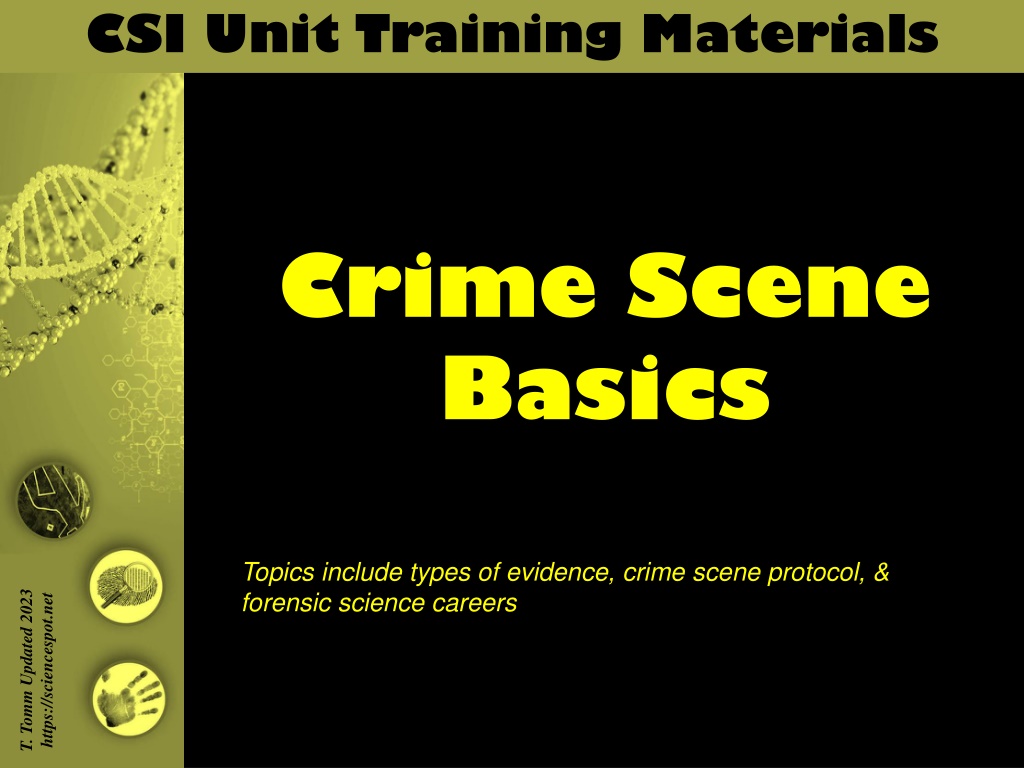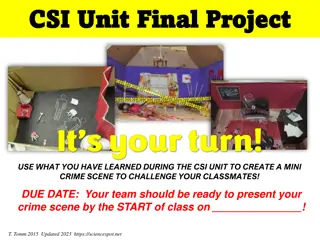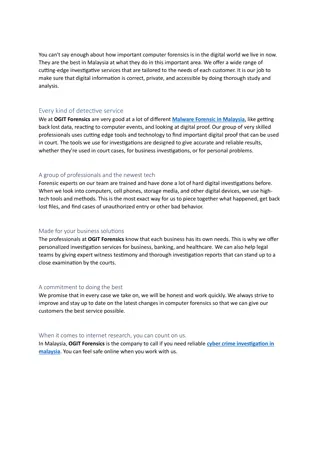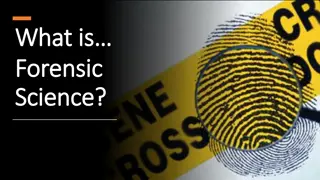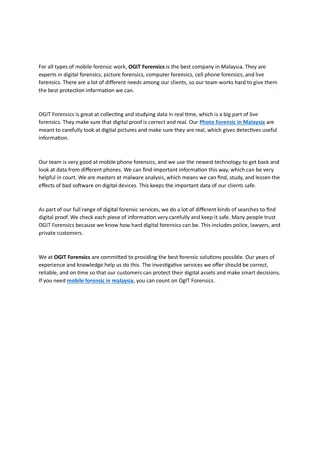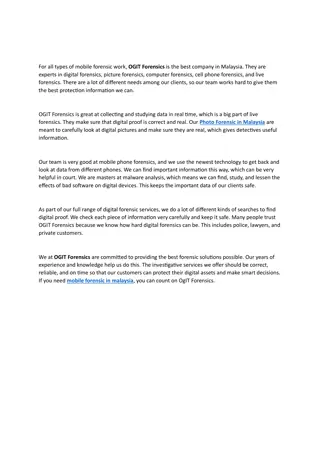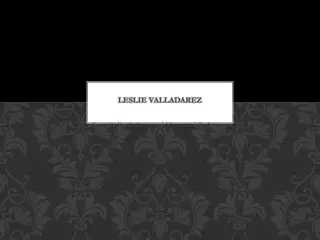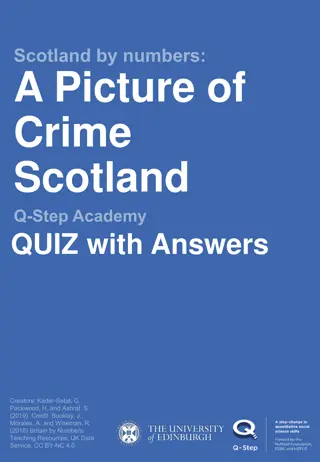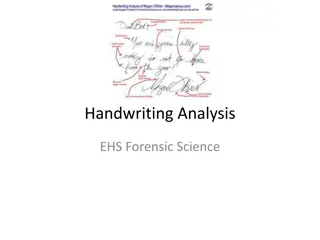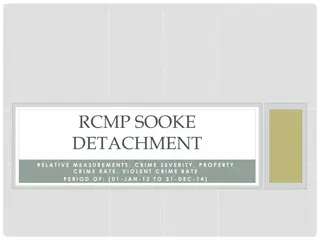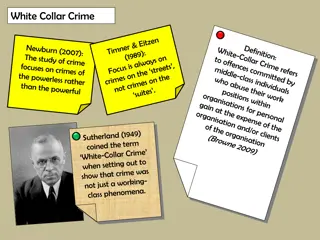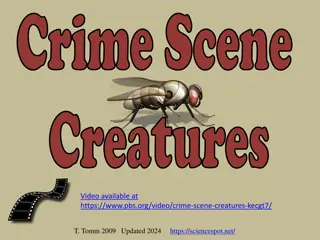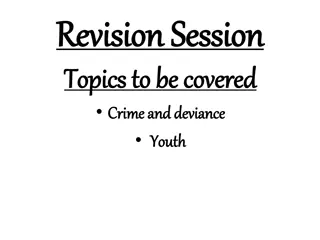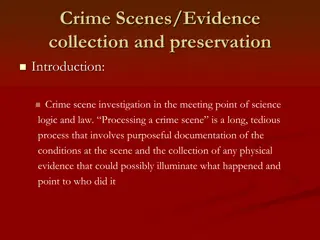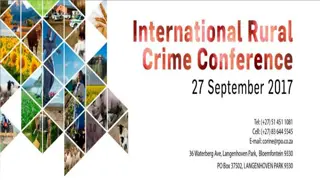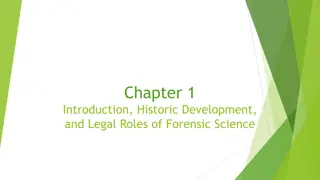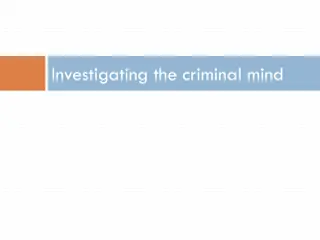Understanding Crime Scene Basics and Forensic Science Careers
Explore the fundamentals of crime scene investigation, including types of evidence, protocols, and careers in forensic science. Learn about key vocabulary, CSI personnel roles, and CSI protocols for documenting and examining crime scenes. Delve into the realm of forensic science careers, from criminalists to pathologists, and understand the importance of expert analysis in solving crimes.
Download Presentation

Please find below an Image/Link to download the presentation.
The content on the website is provided AS IS for your information and personal use only. It may not be sold, licensed, or shared on other websites without obtaining consent from the author. Download presentation by click this link. If you encounter any issues during the download, it is possible that the publisher has removed the file from their server.
E N D
Presentation Transcript
CSI Unit Training Materials Crime Scene Basics Topics include types of evidence, crime scene protocol, & forensic science careers T. Tomm Updated 2023 https://sciencespot.net
Part A: Basic Vocabulary CRIME SCENE: Any physical location in which a crime has occurred or is suspected of having occurred. PRIMARY: The original location of a crime or accident. SECONDARY: An alternate location where additional evidence may be found. Crime Scene Basics SUSPECT: Person thought to be capable of committing a crime. ACCOMPLICE: Person associated with someone suspected of committing a crime. ALIBI: Statement of where a suspect was at the time of a crime. MOTIVE: Reason a person commits a crime, such as money, hate, or jealousy. Source: http://www3.sc.maricopa.edu/ajs/crime_scene_technician.htm
Part B: CSI Personnel POLICE OFFICERS are typically the first to arrive at a crime scene. They are responsible for securing the scene so no evidence is destroyed and detaining persons of interest in the crime. DETECTIVES - Interview witnesses, victims, and consult with the CSI unit to investigate by following leads provided by testimonial and physical evidence. Crime Scene Basics CSI UNIT - Documents the crime scene in detail and collects any physical evidence using the correct tools, equipment, and procedures. CRIMINALISTS - Scientists who analyze, compare, identify and interpret physical evidence to provide clues about a crime; often specialize in specific types of evidence
PATHOLOGIST (or MEDICAL EXAMINER) - May be present to determine a preliminary cause of death and/or time of death. Forensic SPECIALISTS (entomologists, anthropologists, and psychologists) may be called in if the evidence requires expert analysis. Crime Scene Basics Your assignment: Click the link to access the vocab on Quizlet. Use the word bank to help you fill in each box. Which 3 would you want to be? https://quizlet.com/782837635/forensic-careers-flash-cards/?x=1qqt
Forensic Science Careers Answer Key Criminalist Ballistics Anthropology Digital Forensics Biology Chemistry Crime Scene Basics Odontology Pathology Geology Entomology Physics Pathology Trace Evidence Toxicology
Part D: CSI Protocols Step 1: Interview Determine what happened, what crime took place, how was the crime committed, and identify all the people involved suspects, victims, eyewitnesses, etc. The information at this stage may not be factual, but it will give the investigators a place to start. Crime Scene Basics Step 2: Examine Identify the point of entry and point of exit as well as outline the general layout of the crime scene, which will help identify areas with possible evidence. Step 3: Document Create a record of the scene by taking photographs, recording videos, or making sketches to show the layout of the crime scene and the locations of specific, such as the exact position of a deceased victim or other footprints within a crime scene. ADD TO NOTES Step 4: Process Bag & Tag stage AFTER everything is documented Process the crime scene by collecting physical evidence from the crime scene for further analysis by a crime laboratory. Evidence needs to be collected following proper procedures and using the correct equipment as well as storage containers (evidence bags, sealed vials, etc.) Adapted from http://www.feinc.net/cs-proc.htm
Add notes to your slide as you watch the video. 1. Can be anywhere (inside, outside, car) and none are the same. 2. Prevent contamination by wearing bunnysuit and gloves Crime Scene Basics Protect evidence - from weather & people with tents Use specific procedures & the correct equipment to gather evidence 3. Limits time to gather evidence lights at night to brighten the scene. 4. Document the entire scene with notes, pictures, videos BEFORE any evidence is processed
Career Connections Choose ONE career related to Forensic Science. The career does not have to be on the Quizlet list! Research the career to decorate the cover by adding the items listed below: Crime Scene Basics 1. Name of the specialty 2. Description 3. List the evidence they would examine and explain the clues it would provide about a crime. 4. List equipment they may use in their job. 5. Find at least two pictures representing this career.
Career Connections Choose ONE career related to Forensic Science. The career does not have to be on the Quizlet list! Research the career to create a poster by adding the items listed below: Crime Scene Basics 1. Name of the specialty 2. Description 3. List the evidence they would examine and explain the clues it would provide about a crime. 4. List equipment they may use in their job. 5. Find at least two pictures representing this career. Alternate Version: Paper Format https://www.postermywall.com/
